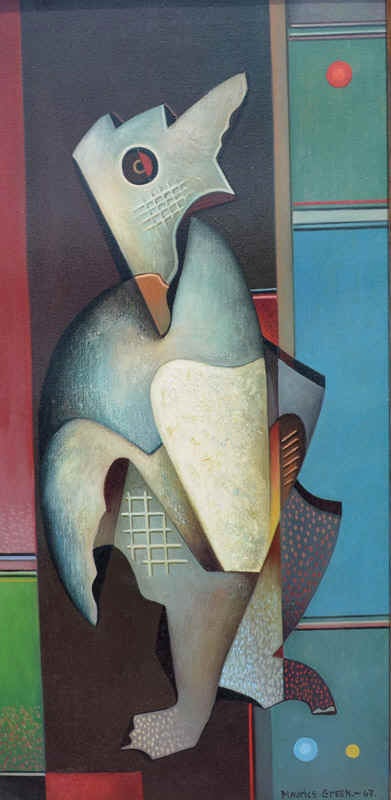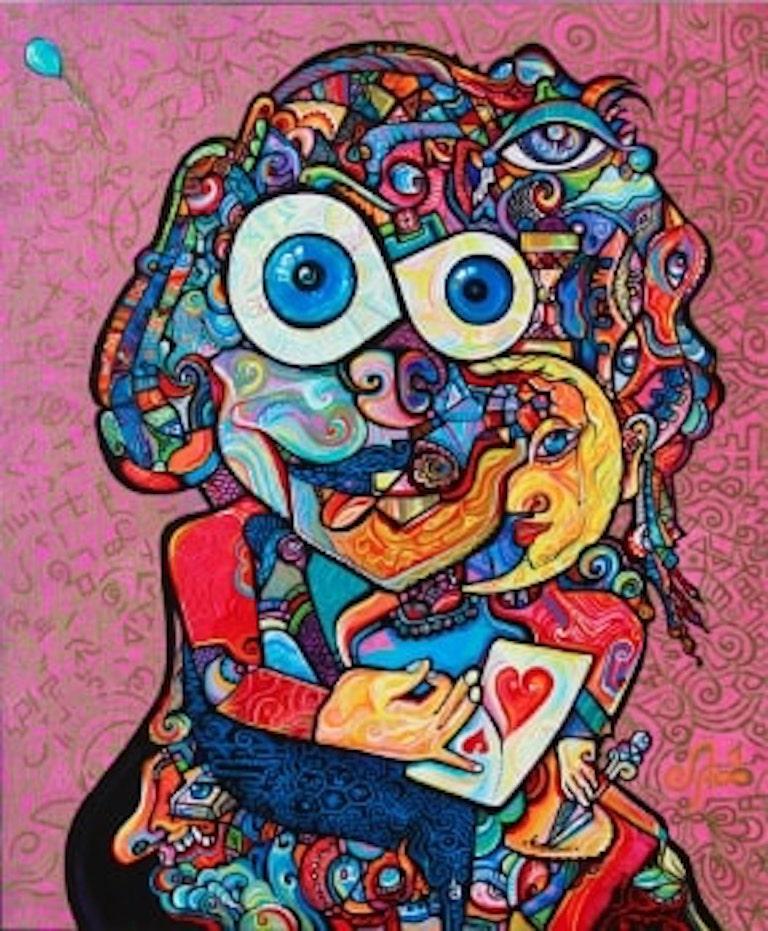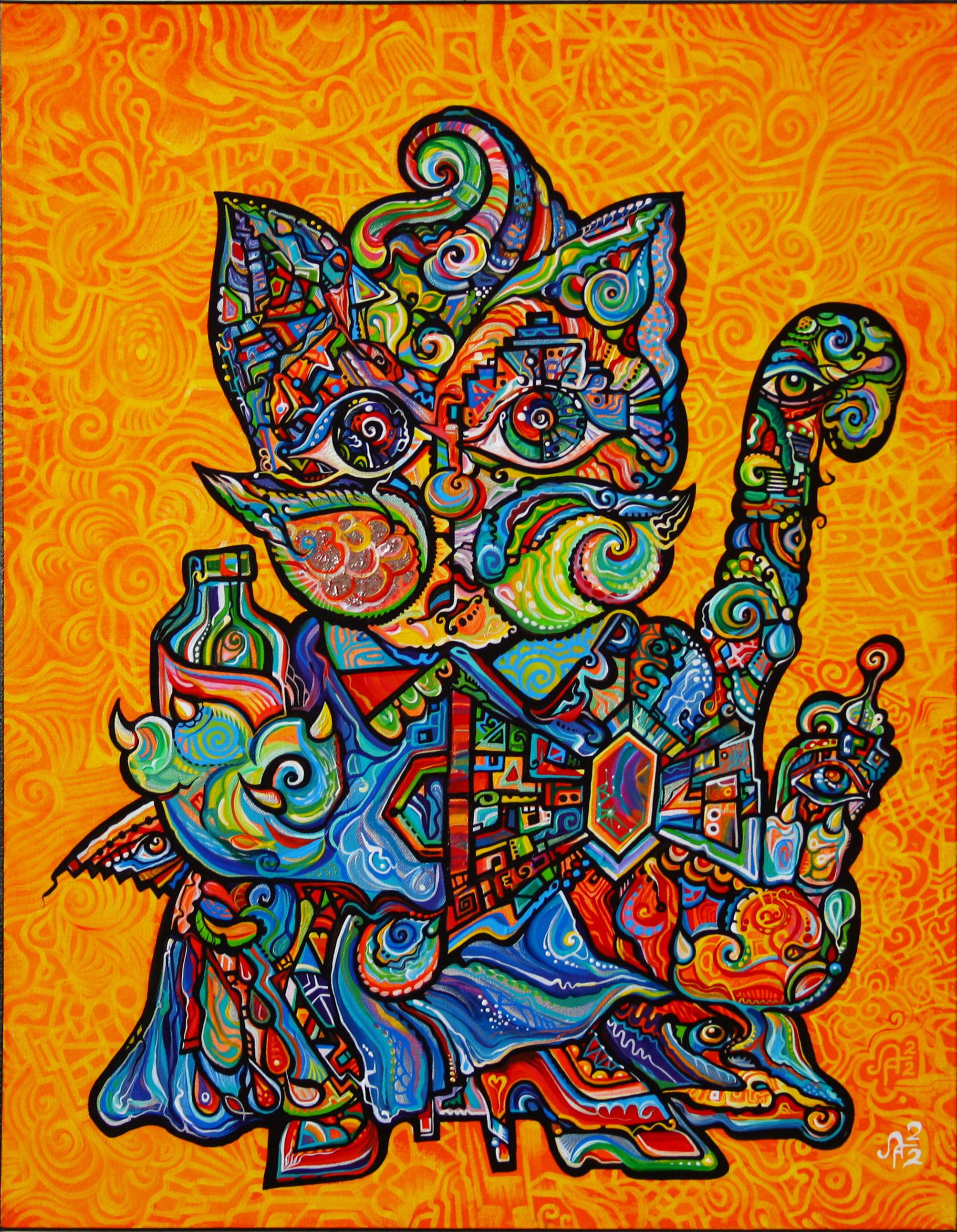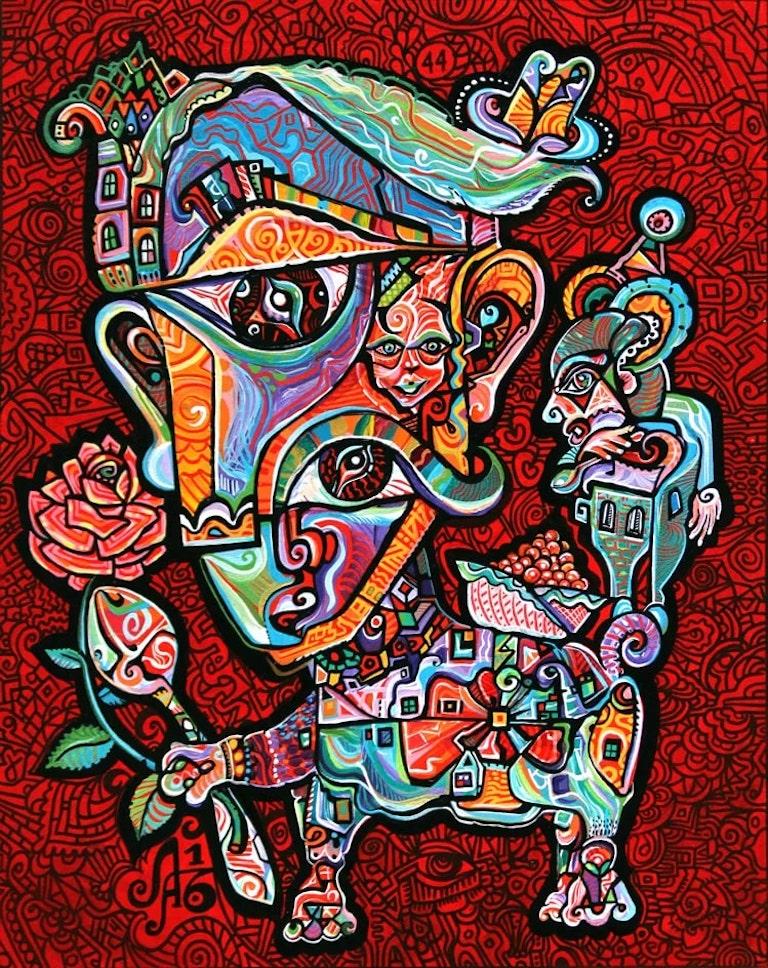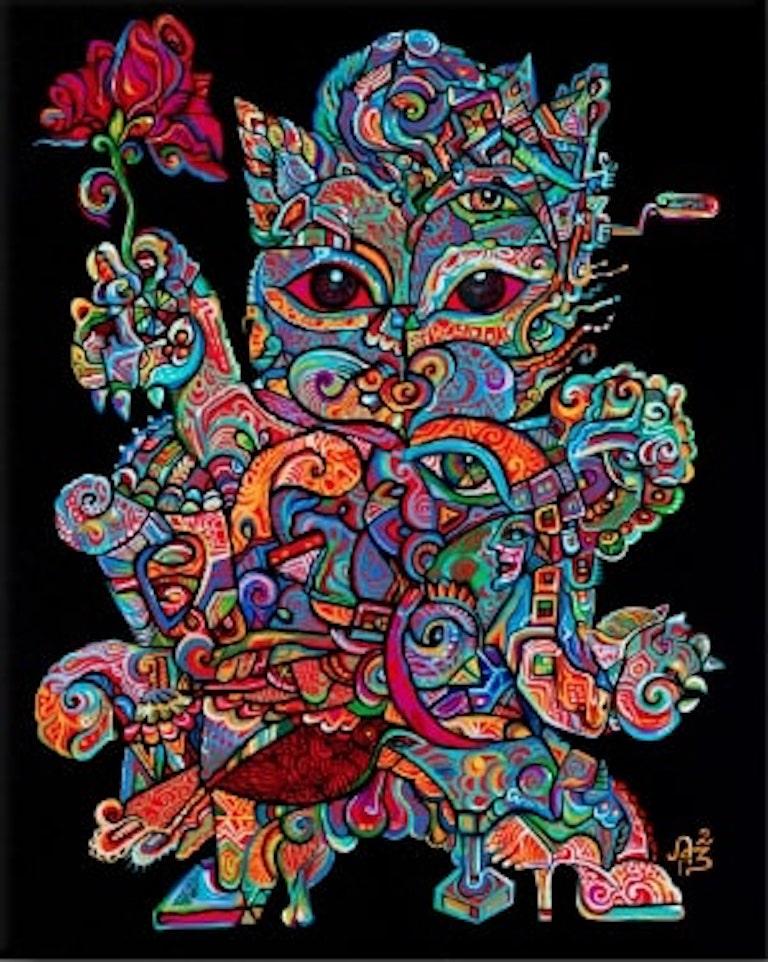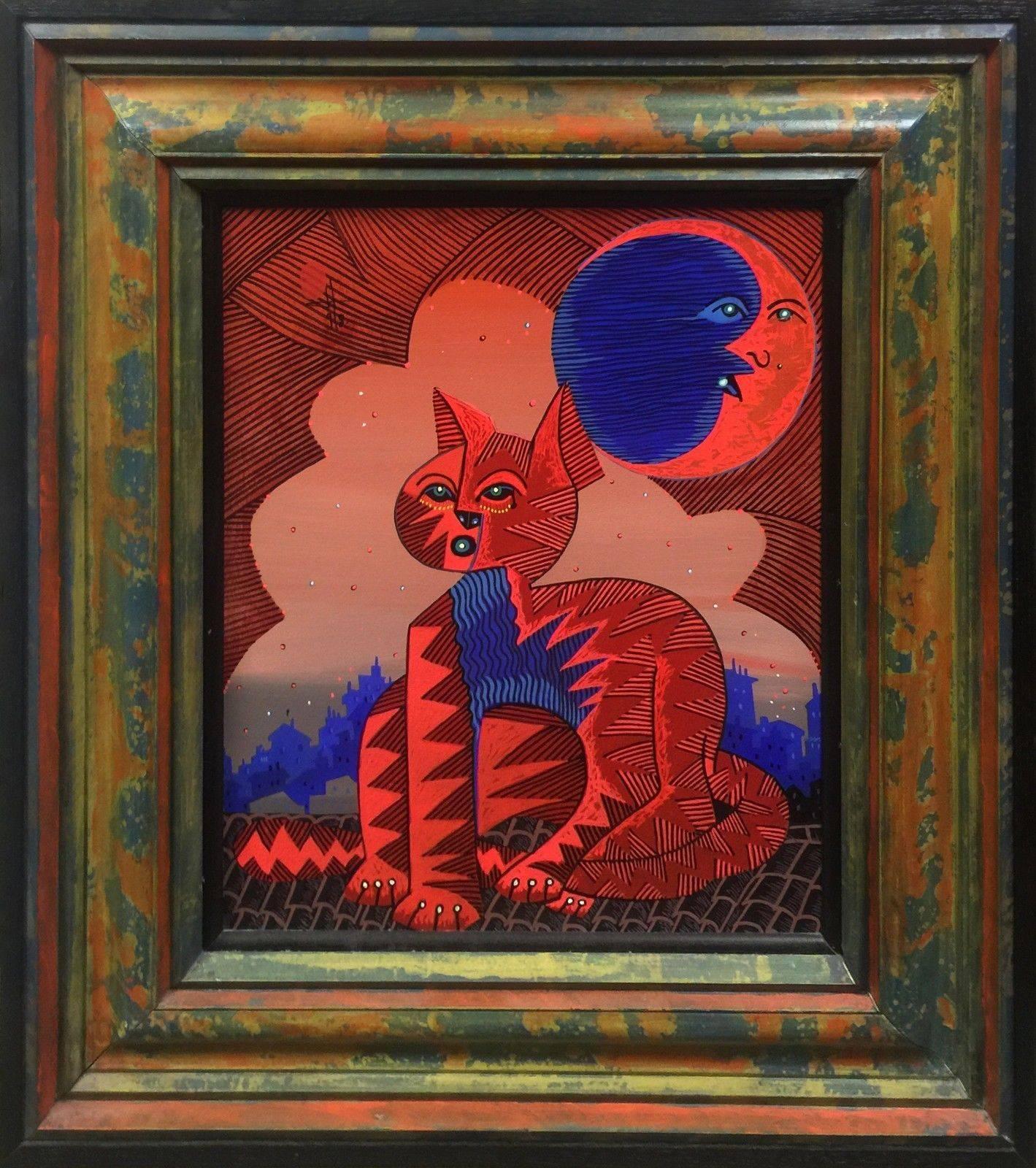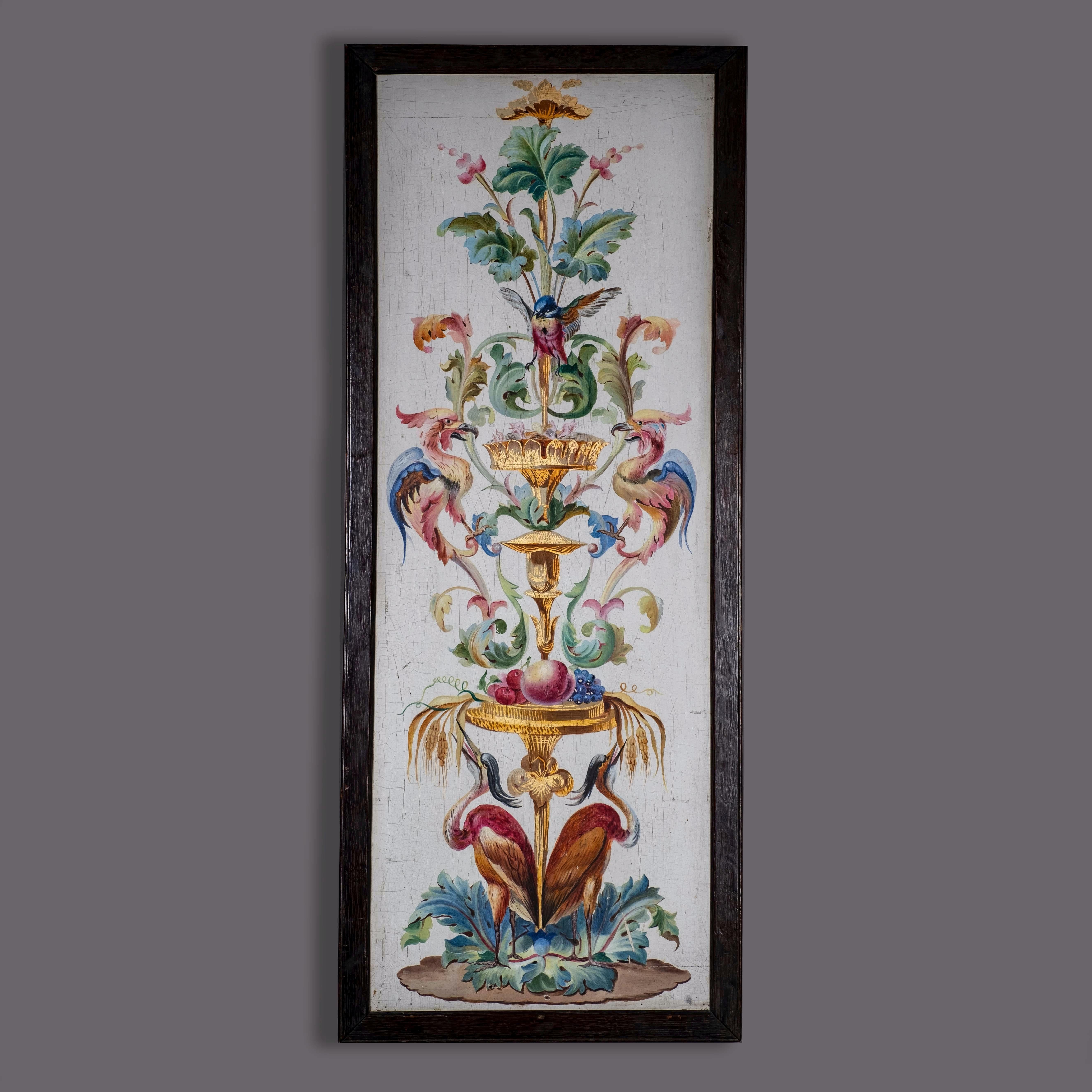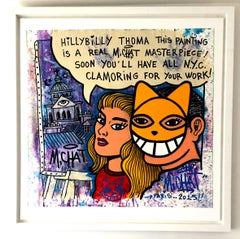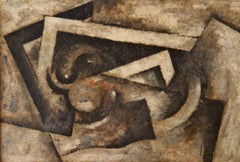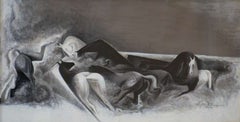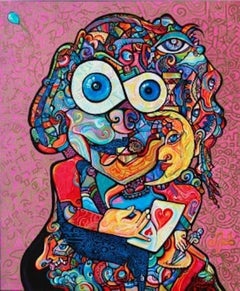
Georges Braque - Pelias et Nélée - Beautiful Litograph
View Similar Items
Want more images or videos?
Request additional images or videos from the seller
1 of 4
Georges BraqueGeorges Braque - Pelias et Nélée - Beautiful Litograph
About the Item
- Creator:Georges Braque (1882 - 1963, French)
- Dimensions:Height: 29.93 in (76 cm)Width: 46.07 in (117 cm)Depth: 0.4 in (1 cm)
- Movement & Style:
- Period:
- Condition:
- Gallery Location:Collonge Bellerive, Geneve, CH
- Reference Number:1stDibs: LU1612394112
About the Seller
4.9
Gold Seller
These expertly vetted sellers are highly rated and consistently exceed customer expectations.
Established in 2015
1stDibs seller since 2015
908 sales on 1stDibs
Typical response time: 1 hour
More From This SellerView All
- M.Chat - Untitled - Street Art Signed PaintingBy M. ChatLocated in Collonge Bellerive, Geneve, CHM. CHAT Untitled Painting mounted on canvas Signed Dimensions : 120 x 120 cm including frame Framed painting Avec certificat Discreet and unobtrusive, Monsieur Chat or M. Chat has been working on the streets since he was 15. His anonymity was broken in 2007 when he was caught painting his famous symbol – the cat. The man behind the mask was revealed to be Thoma Vuille, but he didn’t allow himself to be disturbed by this. Instead, he continued to exacerbate the already crystallized curiosity around the urban graphics of his increasingly present symbol. The shadow of his anonymous existence dispersed upon being shined on, but in the end, he realized that he and his alter ego are one and the same person, so he learned to drop the mask and raise his name alongside the signature of his alter ego. Believing in the idea and repeating it continuously over time, the artist got to the point where he was able to shape those around him in a way that, ultimately, the image he projects outwards is reflected back at him at times when he starts to entertain his own doubts about it. Throughout the World Born in Boudry, in the canton of Neuchâtel, Switzerland, Chat began roaming the streets around 1987. He studied at the Institute of visual Arts of Orléans, graduating in 2001. In 1997, during one of the workshops, the grinning cat was born. In his, now omnipresent symbol, the culture of the neighborhood meets the never-ending optimism of the artist, making a combination that is easily recognizable and widely famous. His dream of uniting human beings, different as they might be, is now possible. That single unifying subject has been found, and he’s ever since on a mission of spreading that subject throughout the world. It was this kind of contagious optimism that nudged the film-maker Chris Marker into approaching the artist, and eventually making a documentary about him in 2004. Reflecting on France’s state after the 9/11, Marker used the phenomenon of the Chat’s cat to explore the sad feelings of the people, but to share some optimism as well. The attention was not focused on the artist, for once, as we do not need to know his personal history to be able to feel something upon seeing his work. In fact, the state of mind, or an attitude, or a philosophical aspiration, is represented through an image. Behind that image lies all the simplicity of a smile painted on a wall, and all the power that comes with it. Vuille keeps the drawing simple and the line clear. On the first sight, the cat looks like a logo. However, it can’t be reduced to a logo, as it’s so much more than that. Belonging to street art, it’s a character with a strong identity and many variations. A character that achieves a symbolic dimension through its simplicity. A Dispute with RATP – Let Art Be Free Street art is highly unpredictable – where one sees inspirational pieces, others see the destruction of property. The artist had been previously arrested on brush in hand by the Police Municipal of Orléans in 2007. The Régie autonome des transports Parisian demanded 1,800 euros in damages, stating that Vuille had, without prior authorization, drawn inscriptions, signs or drawings, in the case of Cat Heads on the walls of the Châtelet-Les Halles station during its renovation in May 2014. Due to some contradictories, Vuille’s lawyer raised the invalidity of the notice of the artist, stating that he and his client were not completely sure what they were accused of. The court found the nullity of the summons, and the RATP finally asked one euro in damages, an amount incomparable to their previous requests. The whole thing turned out to be nothing more than a bad memory for Monsieur Chat, stating that he was not a criminal, but an artist. He also explained that his intention was to humanize a transit corridor, which was gray. All he did was putting some color on it, sharing happy feelings with all who passed nearby. Discreet and unobtrusive, Monsieur Chat or M. Chat has been working on the streets since he was 15. His anonymity was broken in 2007 when he was caught painting his famous symbol – the cat. The man behind the mask was revealed to be Thoma Vuille, but he didn’t allow himself to be disturbed by this. Instead, he continued to exacerbate the already crystallized curiosity around the urban graphics of his increasingly present symbol. The shadow of his anonymous existence dispersed upon being shined on, but in the end, he realized that he and his alter ego are one and the same person, so he learned to drop the mask and raise his name alongside the signature of his alter ego. Believing in the idea and repeating it continuously over time, the artist got to the point where he was able to shape those around him in a way that, ultimately, the image he projects outwards is reflected back at him at times when he starts to entertain his own doubts about it. city english cookies video Monsieur Chat – Siesta à Paris, 2016 (Left) / Sky With Dufy, 2016 (Right), image courtesy of Galerie Brugier-Rigail Throughout the World Born in Boudry, in the canton of Neuchâtel, Switzerland, Chat began roaming the streets around 1987. He studied at the Institute of visual Arts of Orléans, graduating in 2001. In 1997, during one of the workshops, the grinning cat was born. In his, now omnipresent symbol, the culture of the neighborhood meets the never-ending optimism of the artist, making a combination that is easily recognizable and widely famous. His dream of uniting human beings, different as they might be, is now possible. That single unifying subject has been found, and he’s ever since on a mission of spreading that subject throughout the world. It was this kind of contagious optimism that nudged the film-maker Chris Marker into approaching the artist, and eventually making a documentary about him in 2004. Reflecting on France’s state after the 9/11, Marker used the phenomenon of the Chat’s cat to explore the sad feelings of the people, but to share some optimism as well. The attention was not focused on the artist, for once, as we do not need to know his personal history to be able to feel something upon seeing his work. In fact, the state of mind, or an attitude, or a philosophical aspiration, is represented through an image. Behind that image lies all the simplicity of a smile painted on a wall, and all the power that comes with it. Vuille keeps the drawing simple and the line clear. On the first sight, the cat looks like a logo. However, it can’t be reduced to a logo, as it’s so much more than that. Belonging to street art, it’s a character with a strong identity and many variations. A character that achieves a symbolic dimension through its simplicity. The simplicity of the smile painted on a wall represents the state of mind page france french Monsieur Chat – Le Masque...Category
21st Century and Contemporary Street Art Animal Paintings
MaterialsCanvas
- Ferjo - Surrealist Interior - Signed Oil on CanvasBy FerjoLocated in Collonge Bellerive, Geneve, CHFERJO Intérieur surréaliste Signed Oil on Canvas 51 x 61 cm Ferjo, Brazilian (1946 - ) Ferjo Technical achievements in art not only in painting...Category
1990s Surrealist Interior Paintings
MaterialsOil
- Robert Marc - Untitled - Signed Oil on CanvasBy Robert MarcLocated in Collonge Bellerive, Geneve, CHRobert Marc Untitled Oil on Canvas Signed 60 x 80 cm 80 x 100 cm (Framed) The painting is rich and complex with a palette and surface quality that warms and harmonises his ge...Category
1950s Cubist Abstract Paintings
MaterialsOil
- Louis Toffoli - BrodeuseBy Louis ToffoliLocated in Collonge Bellerive, Geneve, CHLouis TOFFOLI (1928 - 1999) Brodeuse Signed lower right Oil on canvas 55 x 38,1 cm 78 x 60 cm (Framed) Louis TOFFOLI was born in Trieste, in Italy in 1907. After graduatin...Category
1970s Cubist Figurative Paintings
MaterialsOil
- Jean Cocteau - Europe's Agriculture - Original LithographBy Jean CocteauLocated in Collonge Bellerive, Geneve, CHOriginal Lithograph by Jean Cocteau Title: Europe's Agriculture Signed in the stone/printed signature Dimensions: 33 x 46 cm Luxury impression from the portfolio published by Sciaky....Category
1960s Cubist Animal Prints
MaterialsLithograph
- After Georges Braque - Antiborée - LithographLocated in Collonge Bellerive, Geneve, CHLithograph after Georges Braque. Signed in the plate Edition of 150 Dimensions: 76 x 117 cm Bibliography: « Les Métamorphoses de Braque» of Heger de Loewenfeld and Raphaël de Cuttoli , Editions FAC, Paris, 1989. In 1961 Georges Braque decided with his laidary friend Heger de Loewenfeld to pick up certain of his works to in order to create artworks, this beautiful litograph is one of them. Héméra in the Mythology: In Greek mythology Hemera was the personification of day and one of the Greek primordial deities. She is the goddess of the daytime and, according to Hesiod, the daughter of Erebus and Nyx (the goddess of night). Hemera is remarked upon in Cicero's De Natura Deorum, where it is logically determined that Dies (Hemera) must be a god, if Uranus is a god. The poet Bacchylides states that Nyx and Chronos are the parents, but Hyginus in his preface to the Fabulae mentions Chaos as the mother/father and Nyx as her sister. She was the female counterpart of her brother and consort, Aether (Light), but neither of them figured actively in myth or cult. Hyginus lists their children as Uranus, Gaia, and Thalassa (the primordial sea goddess), while Hesiod only lists Thalassa as their child. The father of Cubism Three Cubist that distinguishes art historian periods were initiated and developed by Georges Braque: The Cubist Cézanne (1907-1909), Executive (1909-1912) and synthetic (1912-1922). Post-Impressionist and fawn, Braque no longer adheres to the contingency of a decorative way or the other. Cézanne’s paintings exhibited at the Grand Palais during the retrospective of 1907 are a revelation: Cézanne sought and invented a pictorial language. In his footsteps, Braque went to the South with the reasons of the Master. He returned with Estaque landscapes and surprising Ciotat it keeps Cezanne geometric model and retains the “passages” continuity from one surface to another to create the sensation of “turning around” of the object represented. But he wants to go after the consequences of the vision of Cezanne. In his paintings Houses in L’Estaque (1908) it simplifies the volumes of houses, neglects detail by removing doors and windows: the plastic rhythm that builds the table. Large Nude , a masterpiece of the period, can be considered the first work of Cézanne cubism . Systematizing and deepening Braque discoveries open the door analytical cubism. In 1909, his painting became more cerebral than sensual. The pattern is recreated in the two-dimensionality of the canvas, leaving aside any illusionistic perspective. In Still Life with Violin, objects are analyzed facets according to their characteristic elements, each facet referring to a particular view of the object. There are so many facets of points selected view: Table reflects the knowledge of the object and the ubiquity of the eye. Moreover, Braque is looking for the essence of the objects in the world rather than their contingency, which explains the absence of light source and use of muted colors (gray, ocher), contingent aspects of the object . But formal logic has stepped facets, erased any anecdote to the object and ultimately led to his painting a hermetic more marked on the edge of abstraction (see the series of Castle Roche-Guyon ). Braque, anxious to keep the concrete and refusing at all costs that the logic of Cubism takes the paintings to abstract, reintroduced signs of reality in his paintings in 1912 marks the beginning of Synthetic Cubism. Historians speak of “signs of real” rather than reality because what interests Braque, this is not to put reality into a table, but to create a painting which, by its language, refers to the real. To do this, he invented two major techniques XX th century inclusions and contributions. The inclusions consist of painting objects that have no real depth, materials (wallpaper in Nature morte aux playing cards faux wood is a pictorial inclusion) or letters (calligraphic inclusion in Portuguese ), made first brush and a few months later stencil. Contributions are defined in contrast with the collage on canvas of foreign materials: glued or sand paper, sawdust, etc.. Regarding the collages, Braque used for the first time in September 1912 a piece of adhesive paper imitating faux wood Compote...Category
1950s Cubist Animal Prints
MaterialsLithograph
You May Also Like
- The PenguinBy Maurice GreenLocated in West Hollywood, CAPremiering for the first time in three decades, the original paintings of American artist Maurice Green. Born in 1908 in Latvia, Maurice Green studied with prominent artists of the day before settling in Los Angeles in the 1930’s. The artist continued his art education and began exhibiting throughout galleries in Southern California. Due to his intense fascination with the cubist avant garde movement, into cubist imagery which became the trademark style of painting for the remainder of his life. This is the first presentation of the paintings of Maurice Green since his death in 1993. “The Penguin...Category
1970s Cubist Animal Paintings
Price Upon Request - Wild Horses, 1938By Gustav RehbergerLocated in West Hollywood, CAWe are proud to premier for the first time in more than twenty years, the paintings of Austrian/American artist Gustav Rehberger (1910–1995). G...Category
1930s Cubist Animal Paintings
MaterialsAcrylic Polymer, Gouache
- Cubist Painting, "The Love Card"By Alexander ArshanskyLocated in San Diego, CAThis is a one of a kind original cubist acrylic painting on canvas by San Diego artist, Alexander Arshansky. Its dimensions are 20"x 24" x1.5". It is unframed. A Certificate of Authe...Category
2010s Cubist Abstract Paintings
MaterialsAcrylic
- Biomorphic Cubist Painting, "Black Rabbit"By Alexander ArshanskyLocated in San Diego, CAThis is a one of a kind original abstract cubist acrylic painting on canvas by San Diego artist, Alexander Arshansky. Its dimensions are 20"x 24"x1...Category
2010s Cubist Abstract Paintings
MaterialsAcrylic
- Biomorphic Cubist Painting, "Gatoro Gato de Oro"By Alexander ArshanskyLocated in San Diego, CAThis is a one of a kind original abstract cubist acrylic painting on canvas by San Diego artist, Alexander Arshansky. Its dimensions are 22"x 28"x1.5". It is unframed. A Certificate ...Category
2010s Cubist Abstract Paintings
MaterialsAcrylic
- Cubist Figurative Painting, "Taste of Caviar"By Alexander ArshanskyLocated in San Diego, CAThis is a one of a kind original cubist painting by San Diego artist, Alexander Arshansky. Its dimensions are 16"x20"x1.5". It is unframed. A Certi...Category
2010s Cubist Figurative Paintings
MaterialsAcrylic
Recently Viewed
View AllMore Ways To Browse
Cubist Cat Sculpture
George The 3th
Jewelry Advertisement
Dated 1923 Ring
Nature Morte Animal
La Mer Etrog
Onyx Compote
Vintage Louvre Doors
Cubism Style Cabinet Cabinets
Vintage Step Up End Tables
1900 Th Century Rings
Retro Mens Onyx Ring
Jewelery Cabinet
Poison Dart Frogs
Totem 4 Hunt Slonem
3 Dalmatians Oil Painting
Edward Eggleston On Sale
George W Whitaker

